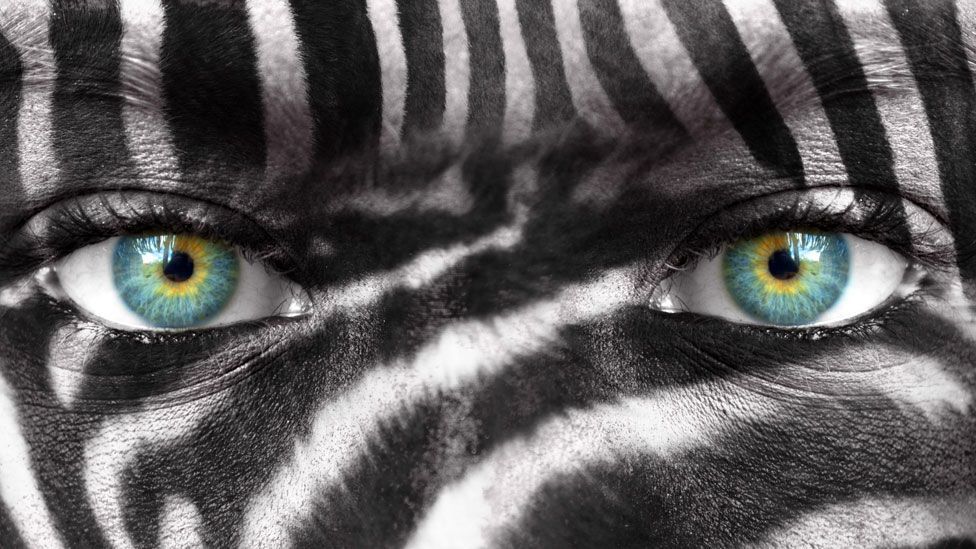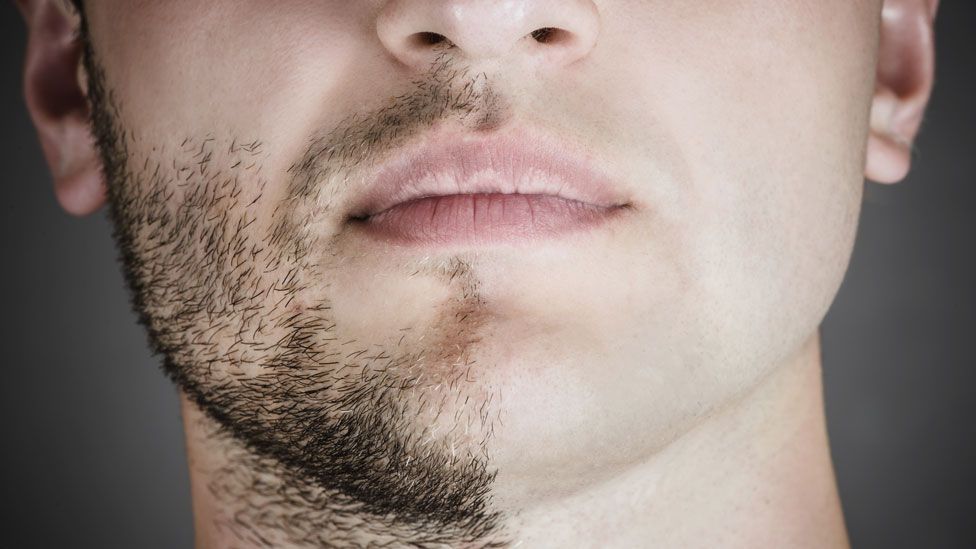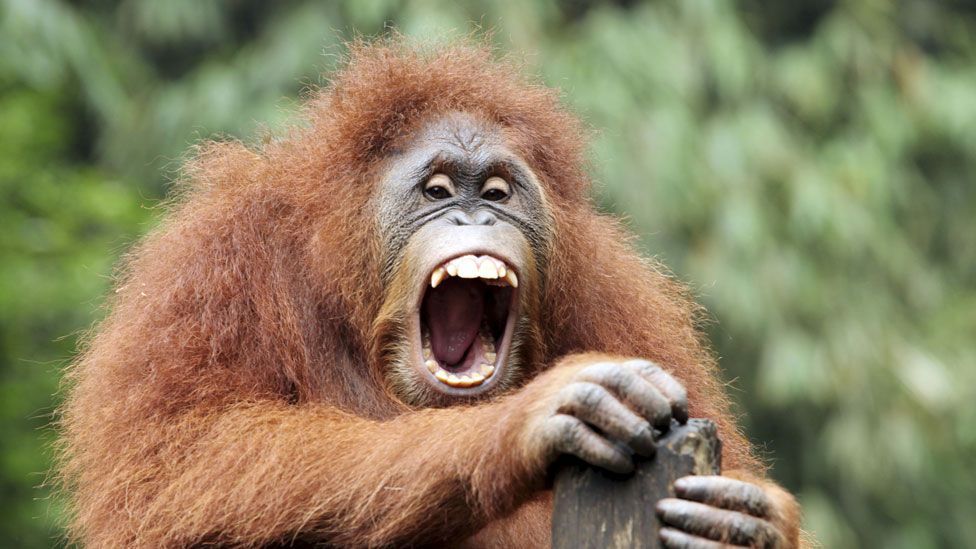Why Is the Hair on the Back of My Head Greasy
Evolution: Why don't we have hairier faces?

Men may have beards, but compared to many of our primate cousins our faces are pretty hairless – why is that? Jason G Goldman explores the enigma of our bare-faced cheeks.
H
Have you ever stopped to consider your face? Compared to most of the rest of the animal kingdom, the human face has at least one really peculiar feature: it's almost completely devoid of hair. Sure, some people grow beards or moustaches, but even a full pirate's beard would leave quite a bit of skin showing. They don't call us "the hairless ape" for nothing. How did we come to be so bare-faced?
The reasons we lost our body hair are still debated. Some researchers think that we lost our fur to free ourselves of parasites, such as lice. This might have made us more attractive to the opposite sex; bare skin would advertise our lack of parasites. Others have suggested that we lost most of our hair to facilitate cooling as we moved from the shady forests to the hot savannah. Still others wonder whether nakedness is one of a number of juvenile traits that humans retain throughout their lifetimes; humans are thought to be, in one sense, juvenilised apes, who mature slower and live longer than our ape cousins.
Yet Mark Changizi, a neurobiologist at 2AI Labs in Boston, has an intriguing alternative explanation for why we don't have hair on our faces, at least when we compare ourselves to other primates. It's because we're walking, talking, breathing 'mood rings'.
Colour reveal
Mood rings were a short-lived fad of the mid 1970s. The idea behind wearing one was that it would act as a sort of emotional barometer, betraying your innermost feelings to anyone who took a glance at the jewellery. In truth, mood rings were little more than thermometers, designed to change colour according to body temperature. But the idea – that colour betrays emotion – isn't actually all that farfetched. The idea is pervasive in human culture. We become "green with envy". We turn red when angry or embarrassed. Sadness is referred to as "the blues". The truth may not be so far off.

Men might have beards, but compared to other mammals we're pretty bare-faced (Thinkstock)
Changizi, together with researchers Qiong Zhang and Shinsuke Shimojo, argues that our faces evolved their hairlessness to allow other members of our species the ability to read our emotions. Indeed, primate faces and – in some cases – rumps and genitalia change colours thanks to the underlying physiology of the skin. "For highly social animals like most primates, one of the most important kinds of objects to be competent at perceiving and discriminating is other members of one's own species," he writes.
Most mammals, like dogs, horses, or bears, can only see blends of two colours when they look at the world. They're called dichromats, and they can only see yellows, blues, or the greens that form when blue and yellow mix – in addition to perceiving brightness. That's because their eyes have, in addition to the brightness-sensing rods, only two types of cones: ones sensitive to short or long wavelengths of light. But humans and some other primates are trichromats. We have a third type of cone, sensitive to medium wavelengths of light. Having that third cone means that we can also detect colours along a red-green continuum. (A few lucky people are tetrachromats, which means they can see even more shades).
Blood flow
But there's something odd about the three types of cones that trichromats have: they're not evenly spaced out. It just so happens that this odd assortment of cones allows our eyes to perceive properties of the blood circling through our bodies just beneath the skin: how saturated with oxygen the haemoglobin is, and how concentrated the haemoglobin is. Changes in those two variables result in predictable changes in skin colouration.
It's actually quite remarkable how many colours human skin can be. We're used to thinking of skin as being white, black, or brown. But those are just a baseline. Darker faces still blush, after all, something that even Darwin noticed. Skin appears redder as haemoglobin becomes more and more oxygenated. Reductions in oxygen saturation turn the skin green (which is just how veins carrying de-oxygenated blood back to the heart look). On the other hand, a greater accumulation of blood in a certain area turns the skin somewhat blue. Just like a bruise. And a reduction in blood concentration does the opposite, making the skin appear yellow. Which, indeed, is how we describe somebody who isn't looking very healthy. "Colour is sufficiently suggestive of emotion," writes Changizi, "that cartoons often use colour on a face to indicate emotional state." And it's something that even children can recognise effortlessly.

Other primates with bare faces tend to have vision like ours (Thinkstock)
Dichromats – the dogs, bunnies, and bears of the world, along with certain primates – can only perceive changes along the blue-yellow dimension, allowing them to notice changes only in blood concentration. In some ways, that's a useful skill. It's probably best to avoid someone who looks yellow, to avoid becoming infected with whatever disease or sickness they're trying to fight off, or to escape being near someone who might imminently vomit. On the other hand, a bruise betrays injury, someone who will be easier to beat in a fight over resources.
Here's the best part: if it's true that facial bare skin evolved to allow for colour signalling, then other trichromatic primates should have visible skin too. To see if his hypothesis held up, Changizi looked at 97 different primate species. Sure enough, he found that monochromatic and dichromatic primates are furry, while those, including us, who have three types of cones have more visible facial skin.
Even if bare skin was initially selected for something other than colour signalling, it is likely the case that both colour vision and visible skin became evolutionarily entangled, at least among primates, argues Changizi.
So next time your friends ask you what you're feeling, just tell them to look at your skin. They should be able to figure it out: after all, they have millions of years of evolution on their side.
If you would like to comment on this article, or anything else you have seen on Future, head over to our Facebook or Google+ page, or message us on Twitter.
Why Is the Hair on the Back of My Head Greasy
Source: https://www.bbc.com/future/article/20140926-are-hairy-faces-less-evolved